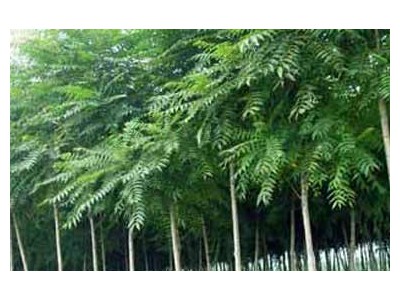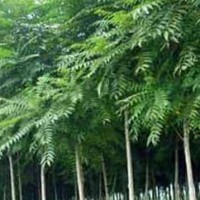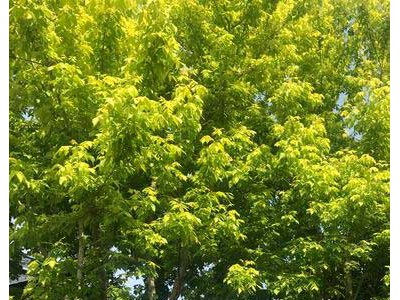Ailanthus altissima
Ailanthus altissima is a deciduous tree of the family Ailanthus altissima. Its bark is gray to gray-black. The original name is barnyard, also known as the talon tree and the wood hull tree. It is named because of the smell of the glands at the base of the leaf. It is native to Northeast China, Central China and Taiwan. It grows in a temperate climate zone. This tree grows quickly and can reach a height of 15 meters in 25 years. This species has a short life span and rarely survives more than 50 years.
This species grows well in limestone areas and can be used as afforestation tree species in limestone areas, as well as landscape trees and street trees. The wood is yellow and white, which can be used to make farm tools, vehicles, etc.; the leaves can be fed on the silkworm (Ceromidae); the bark, root bark, and fruit can be used as medicine. It is equivalent to clearing heat and dampness, astringent and stopping dysentery; seeds contain 35% oil. This species reproduces on its own in many cities in North America, Europe and Asia and becomes a "weed tree".
Ecological habits:
Happy light, intolerant to the shade. It has strong adaptability. In addition to clay, it can grow on various soils and neutral, acidic and calcareous soils. It is suitable for deep, fertile and moist sandy soils. Cold-tolerant, drought-tolerant, intolerant to water and humidity, long-term water will rot and die. Deep-rooted. Vertically distributed in the range of 100 to 2000 meters above sea level.
The growth is normal in the range of annual average temperature of 7~19℃ and annual rainfall of 400~2000 mm; the optimum growth in the range of annual average temperature of 12~15℃ and annual rainfall of 550~1200 mm. Produced in various places, it is a positive tree species. It likes to grow on sunny hillsides or shrubs. It is often cultivated in the front and back of the village and is often planted as street trees.
The soil requirements are not strict, but it grows poorly in heavy clay and stagnant areas. It is resistant to microalkali, and the suitable pH range is 5.5~8.2. It is suitable for neutral or calcareous soil with deep loam or sandy loam, moderate resistance to chlorine gas, strong resistance to hydrogen fluoride and sulfur dioxide. It grows fast, has deep roots and strong germination.
Environmental protection value:
Ailanthus altissima is the main afforestation pioneer tree species in the loess hills and rocky mountains in northern China. Ailanthus altissima grows fast, has strong adaptability, is easy to reproduce, has few pests and diseases, has excellent material, and is versatile. At the same time, it is resistant to drought and barrenness. The main afforestation pioneer trees in mountainous areas.
Ailanthus altissima is a soil improvement tree species for water and soil conservation and saline-alkali land. Ailanthus altissima has strong adaptability, strong tillering ability and developed root system. It is a deep-rooted tree species and is a good tree species for soil and water conservation. At the same time, it is resistant to saline and alkali, and is also a good tree species for greening saline-alkali land.
Ailanthus altissima is a good tree species for greening in industrial and mining areas. Ailanthus altissima has strong anti-smoke ability and is extremely resistant to sulfur dioxide, chlorine, hydrogen fluoride, and nitrogen dioxide. Sulfur dioxide, chlorine, hydrogen fluoride, and nitrogen dioxide are the main emissions in industrial and mining areas. .














